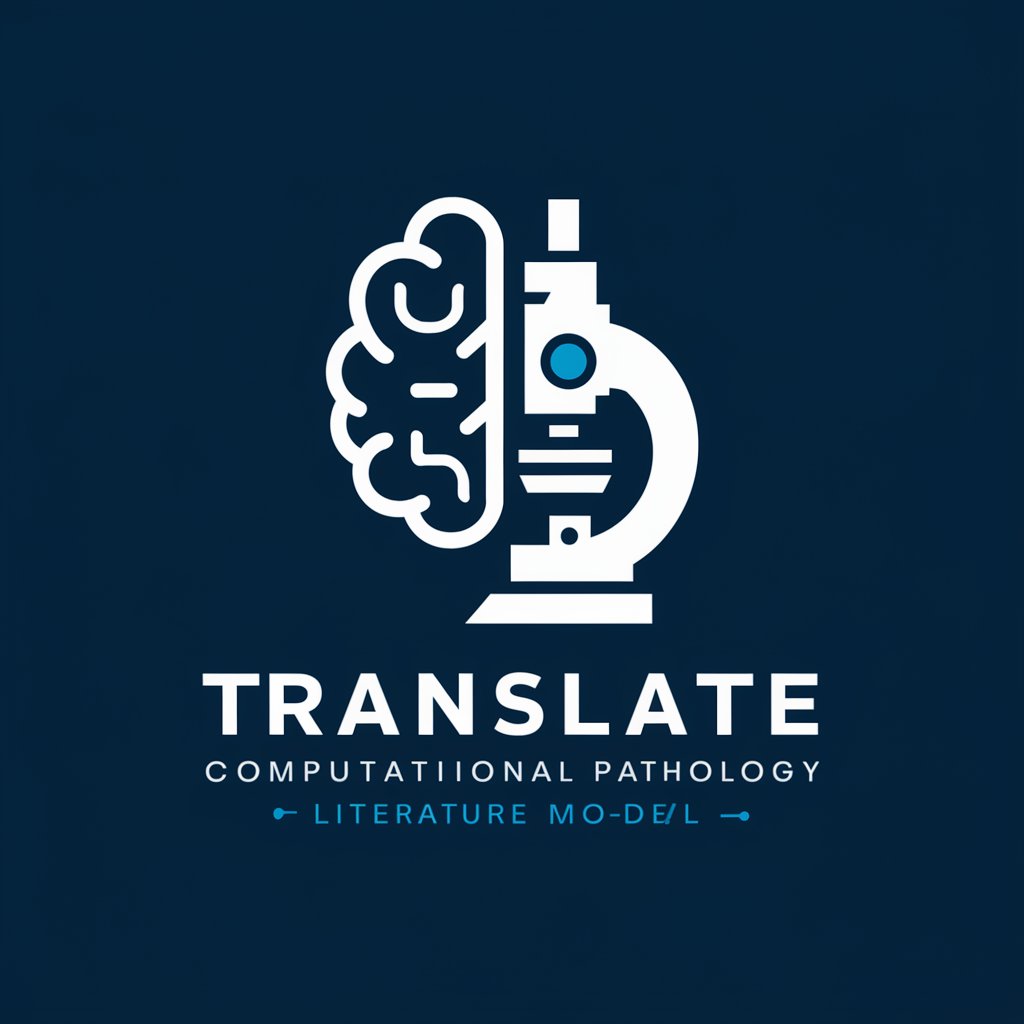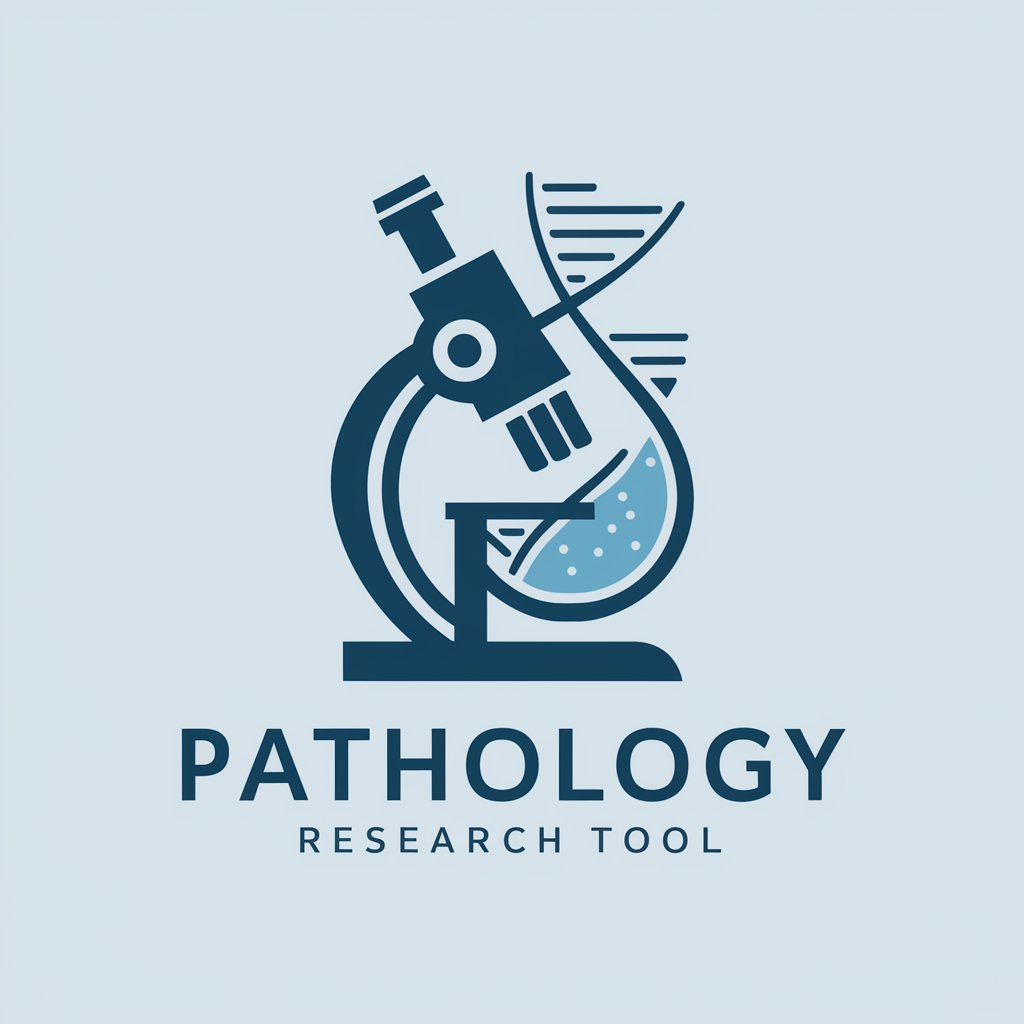Translate computational pathology literature - Pathology Literature Translator

Welcome! Let's explore computational pathology literature together.
Translating Pathology, Enhancing Knowledge
Translate the following computational pathology article into Chinese:
Explain the concept of digital pathology with a focus on image analysis:
How does computational pathology integrate with AI technologies?
Discuss recent advancements in computational pathology techniques:
Get Embed Code
Overview of Translate Computational Pathology Literature
Translate Computational Pathology Literature is a specialized tool designed to facilitate the translation of computational pathology literature from English to Chinese. It ensures accurate and context-sensitive translations, particularly focusing on maintaining the integrity of technical terms and scientific concepts. The tool operates by providing sentence-by-sentence translations, maintaining the structure and meaning of the original text. An example scenario includes translating research papers or clinical study reports where precision in terminology is critical. This helps researchers and clinicians who are not fluent in the source language to access and utilize scientific materials effectively. Powered by ChatGPT-4o。

Core Functions and Applications
Sentence-by-sentence translation
Example
Translating a research paper on the molecular pathology of cancer
Scenario
A researcher wants to understand a detailed study published in English about the genetic markers of breast cancer. Using this tool, the researcher can read the paper sentence-by-sentence in Chinese, ensuring full comprehension of complex scientific data and methodologies.
Technical jargon accuracy
Example
Translating terminology like 'immunohistochemistry' or 'next-generation sequencing'
Scenario
A Chinese-speaking pathologist is reading an English article on new techniques in immunohistochemistry. The tool provides precise Chinese equivalents of specialized terms, enabling the pathologist to grasp the nuances and applications discussed in the text.
Maintaining scientific integrity
Example
Translating findings from clinical trials
Scenario
A medical translator is tasked with translating clinical trial results from English to Chinese for a report that will be submitted to a regulatory body. The accuracy in translating statistical data and study outcomes is crucial, and the tool ensures that the translation adheres to scientific accuracy and regulatory standards.
Target User Groups
Academic Researchers
Researchers in the field of computational pathology who are not native English speakers but need access to the latest research and developments published in English. They benefit from precise translations that allow them to apply new knowledge to their work and collaborate internationally.
Medical Professionals
Clinicians and pathologists who require access to the latest clinical studies, guidelines, and research findings in computational pathology that are often published in English. This tool enables them to understand and integrate these findings into their clinical practice.
Medical Translators
Professional translators specializing in medical documentation who need to ensure high accuracy in translating complex pathology literature into Chinese. This tool aids them in maintaining the integrity of the scientific content.

How to Use Translate Computational Pathology Literature
Step 1
Visit yeschat.ai for a free trial, no login or ChatGPT Plus required.
Step 2
Choose the 'Translate computational pathology literature' option to start translating your text.
Step 3
Copy and paste or upload the pathology text you need translated into the designated input field.
Step 4
Specify the target language for your translation, ensuring it aligns with the academic standards required.
Step 5
Review the translated text for accuracy and use the provided tools to edit or refine the translation as needed.
Try other advanced and practical GPTs
Pathology Research Paper Analysis
Deciphering Pathology Papers with AI

Jesus
Empowering ethical decisions with AI

Jesus
Explore Biblical Wisdom AI-Powered

Jesus
Bringing Biblical Wisdom to Digital Conversations

Jesus
Enlightening paths with AI-powered ancient wisdom

Marathon Mentor
AI-powered Marathon Coaching

Termostato Financiero
Reshape Your Financial Future with AI

Image Verifier
Unveil Reality with AI Precision

Truth GPT
Unveiling Truths with AI Precision

Mr. TRUTH
Uncover hidden truths with AI

Planibot Historia
Revolutionizing History Education with AI

Historia Pal
Reviving History with AI

Frequently Asked Questions About Translate Computational Pathology Literature
What is the primary function of Translate computational pathology literature?
This tool is designed to provide accurate translations of computational pathology literature from English to Chinese, maintaining the integrity of technical terms and scientific content.
Can this tool handle documents of any length?
Yes, it can process documents of varying lengths, from short articles to extensive research papers, with the ability to handle complex scientific vocabulary and terminologies.
Is there a way to ensure the translation maintains all scientific nuances?
The tool uses advanced algorithms tailored to computational pathology to ensure that all scientific and technical nuances are preserved in the translation process.
How does the tool handle updates in pathology terminology?
It is regularly updated to reflect the latest developments and changes in pathology terminology, ensuring that translations remain current and accurate.
What are the system requirements for using this tool?
This web-based tool is accessible on any modern browser without the need for special hardware, making it easily accessible for all users.
